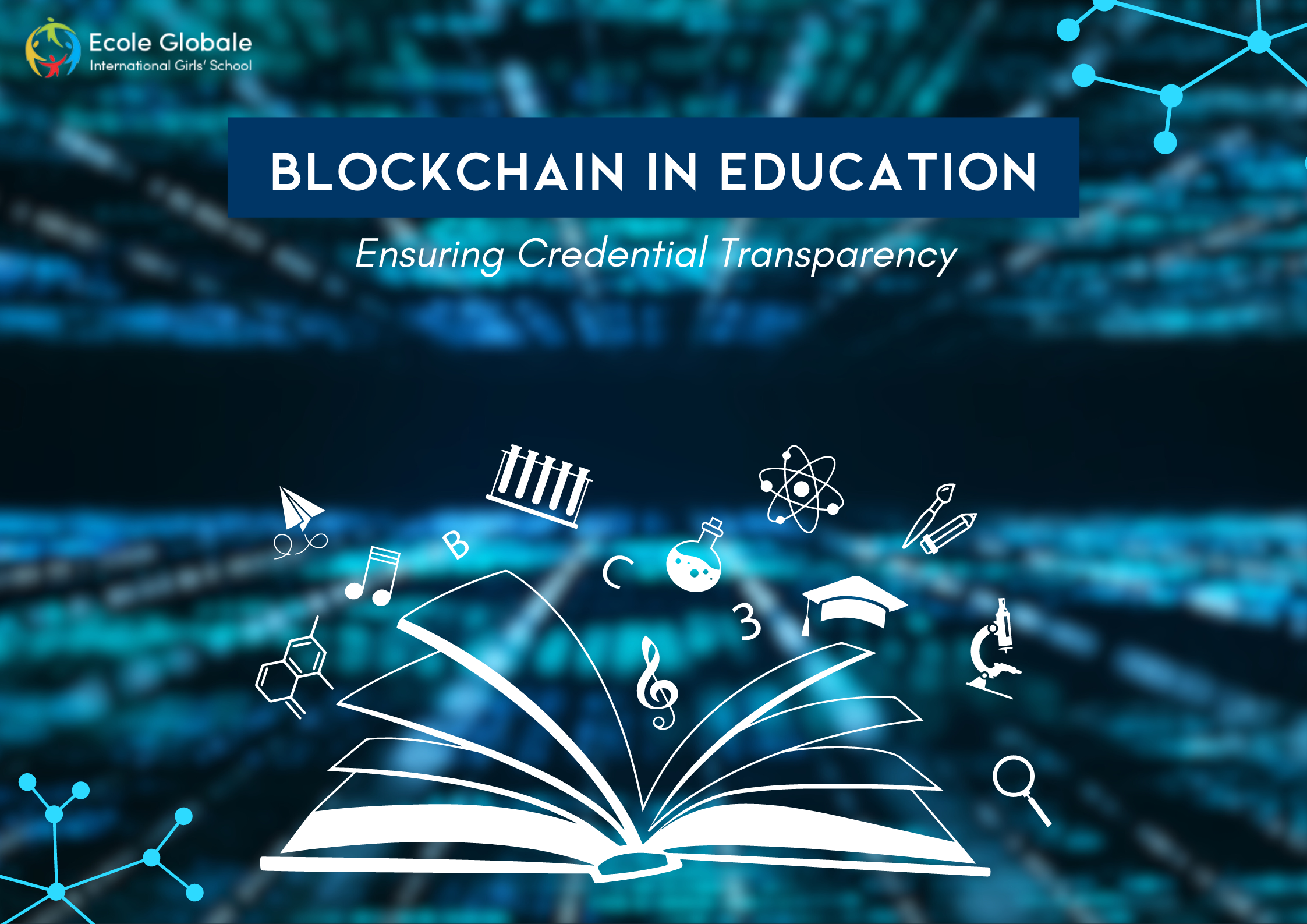Blockchain is a decentralized and distributed ledger technology that enables secure and transparent record-keeping. In the context of blockchain in education, it offers a revolutionary way to manage and verify academic credentials, ensuring their authenticity and reducing the risk of fraud. The us of blockchain technology is increasing in top boarding schools in India.
Significance of Credential Transparency in Education

Credential transparency is crucial in education for several reasons. It enhances trust in the academic system, facilitates efficient verification of qualifications, and ensures that individuals are rightfully recognized for their educational achievements.
Traditional methods of credentialing often face challenges related to fraud and inefficiencies in verification processes.
The Current Credentialing System Challenges
The traditional credentialing system faces numerous challenges such as document forgery, slow verification processes, and centralization of records.
These challenges contribute to a lack of trust and transparency, hindering the effectiveness of the current educational credentialing system.
Understanding Blockchain Technology

Basics of Blockchain
- Decentralization:
Blockchain operates on a decentralized network of computers, eliminating the need for a central authority. This ensures that no single entity has control over the entire system, enhancing security and reducing the risk of manipulation.
- Immutability:
Once information is added to the blockchain, it becomes virtually impossible to alter or delete. This immutability ensures the integrity of the data stored on the blockchain.
- Transparency:
Every transaction on the blockchain is visible to all participants in the network. This transparency enhances accountability and trust among users.
How Blockchain Works
- Blocks and Chains:
Transactions are grouped into blocks, and each block is linked to the previous one, forming a chain. This sequential structure ensures the chronological order and integrity of the information.
- Consensus Mechanisms:
Blockchain networks rely on consensus algorithms to validate and agree on the state of the ledger. Common mechanisms include Proof of Work (PoW) and Proof of Stake (PoS).
- Smart Contracts:
Self-executing contracts coded on the blockchain, automating and enforcing the terms of agreements. In education, smart contracts can facilitate the issuance and verification of credentials.
The Need for Credential Transparency in Education

Traditional Credentialing Issues
- Fraud:
Traditional paper-based credentials are susceptible to forgery. Blockchain’s immutability and transparency reduce the risk of fraudulent activities.
- Lack of Verification Efficiency:
Manual verification processes are time-consuming and prone to errors. Blockchain in Education can streamline and automate these processes, making them more efficient.
- Centralized Systems:
Centralized databases are vulnerable to hacking and data breaches. Decentralized blockchain in education systems distribute data across the network, enhancing security.
Benefits of Transparent Credentialing
- Trust and Security:
Blockchain’s features instill trust in the authenticity of credentials. The decentralized nature of the technology ensures enhanced security.
- Streamlined Verification Processes:
The transparency and accessibility of blockchain in education enable quick and efficient verification of academic qualifications, saving time and resources.
- Global Recognition:
Blockchain facilitates global recognition of credentials, making it easier for individuals to have their qualifications acknowledged internationally.
Blockchain Implementation in Education

Credential Issuance on the Blockchain in Education
- Digital Certificates:
Academic institutions can issue digital certificates stored on the blockchain, providing a tamper-proof record of a student’s achievements.
- Academic Transcripts:
Blockchain in education can be used to create secure and easily verifiable academic transcripts, enhancing the credibility of a student’s academic history.
- Skill Badges:
Blockchain in education enables the issuance of skill badges, certifying specific skills acquired by an individual, contributing to a more granular and comprehensive credentialing system.
Decentralized Identity Verification
- User-Controlled Identities:
Blockchain in Education allows individuals to have control over their educational records, deciding who can access and verify their credentials.
- Privacy Considerations:
Implementing blockchain in education requires careful consideration of privacy concerns. Solutions like zero-knowledge proofs can help maintain privacy while still ensuring the authenticity of credentials.
Use Cases in Educational Institutions
- Universities and Colleges:
Academic institutions can leverage blockchain in education to issue and verify degrees, certificates, and other qualifications securely.
- Online Learning Platforms:
Platforms offering online courses can use blockchain in education to issue verifiable certificates, increasing the credibility of their programs.
- Professional Certification Bodies:
Organizations providing professional certifications can use blockchain in education to ensure the integrity of their credentialing process.
Challenges and Considerations

Technological Barriers
- Scalability:
As blockchain adoption grows, scalability becomes a concern. Solutions like sharding and layer two protocols are being explored to address scalability issues.
- Integration with Existing Systems:
Integrating blockchain with existing educational systems may pose challenges. Institutions need to plan for a seamless transition to ensure compatibility.
Regulatory and Legal Implications
- Data Privacy:
Blockchain’s transparency can conflict with privacy regulations. Solutions such as permissioned blockchains and privacy-focused technologies are being developed to address these concerns.
- Compliance with Education Standards:
Ensuring that blockchain-based credentialing systems comply with existing education standards is crucial for widespread adoption.
Future Outlook

Potential Innovations
- Integration with AI and IoT:
Combining blockchain with artificial intelligence and the Internet of Things can lead to innovative solutions, such as automated credential verification and real-time updates.
- Interoperability between Systems:
Efforts to create interoperable blockchain in education can facilitate seamless communication between different educational systems, enhancing the overall efficiency of the credentialing process.
Anticipated Challenges and Solutions
- Regulatory Evolution:
As blockchain in education evolves, regulations will likely adapt. Collaboration between the industry and regulators is essential to create frameworks that balance innovation with compliance.
- Educational Adoption:
Overcoming resistance to change within the educational sector requires clear communication of the benefits and a phased approach to implementation.









